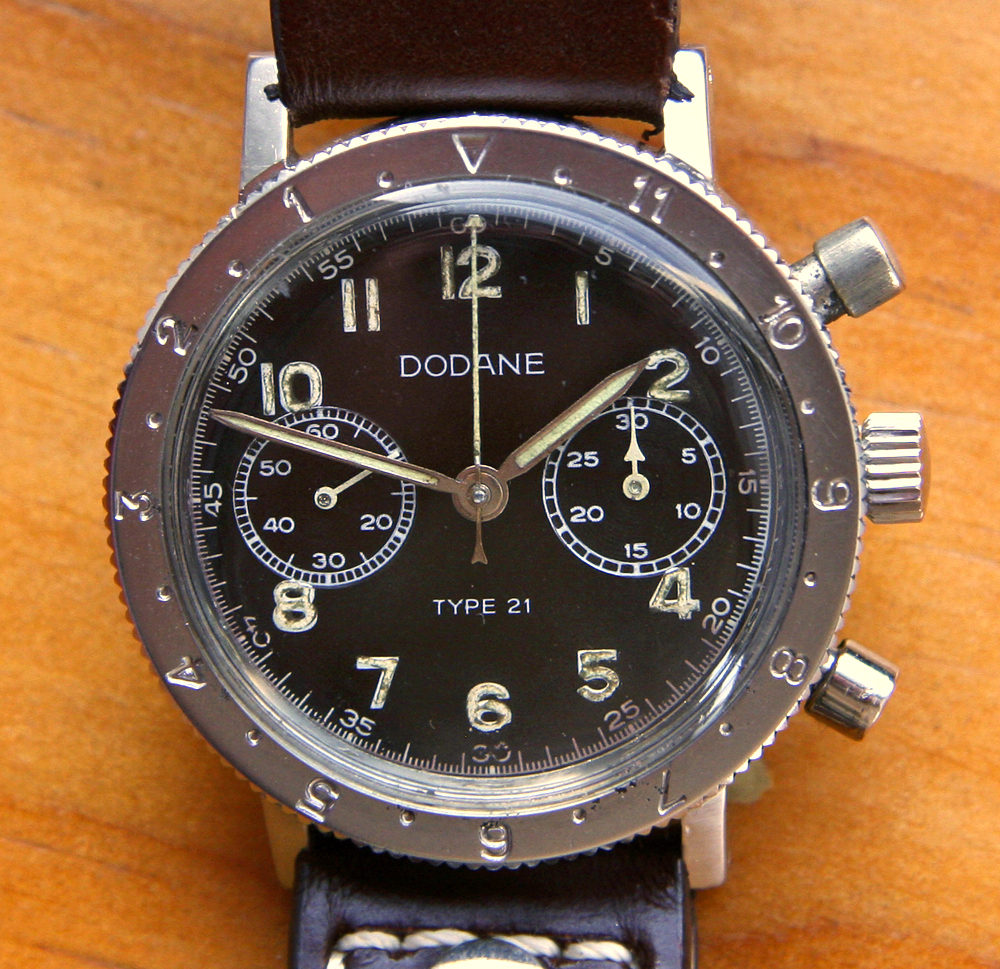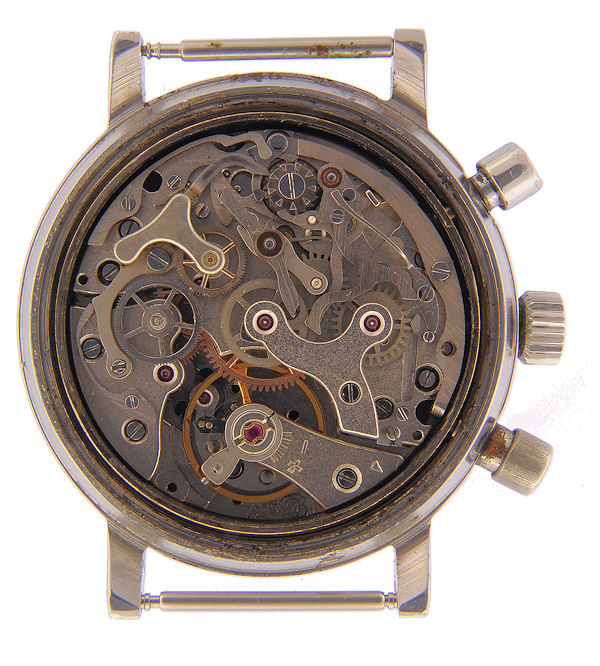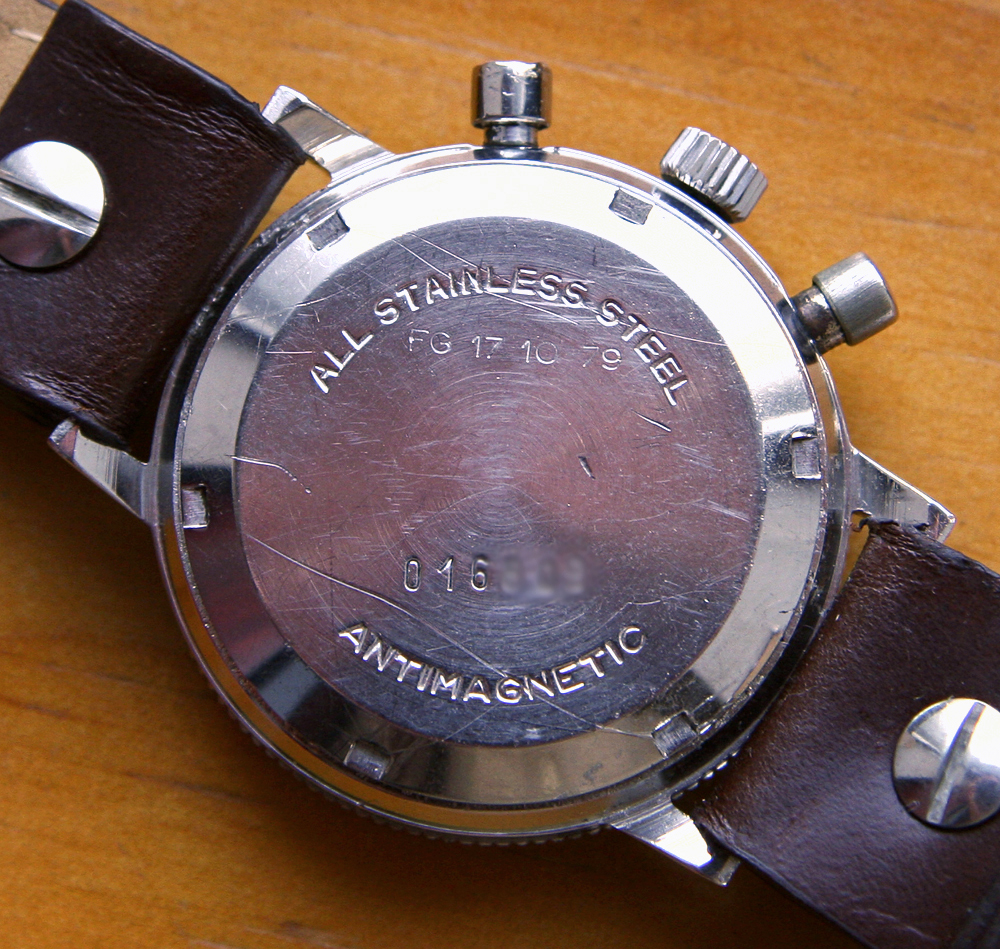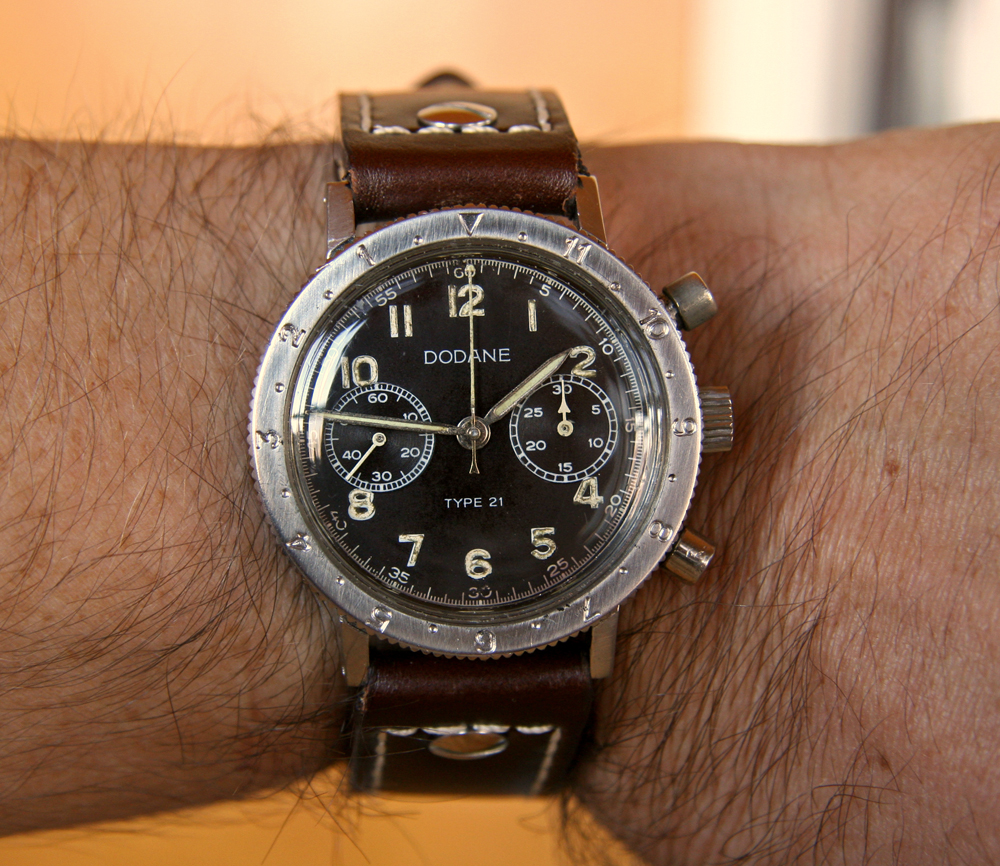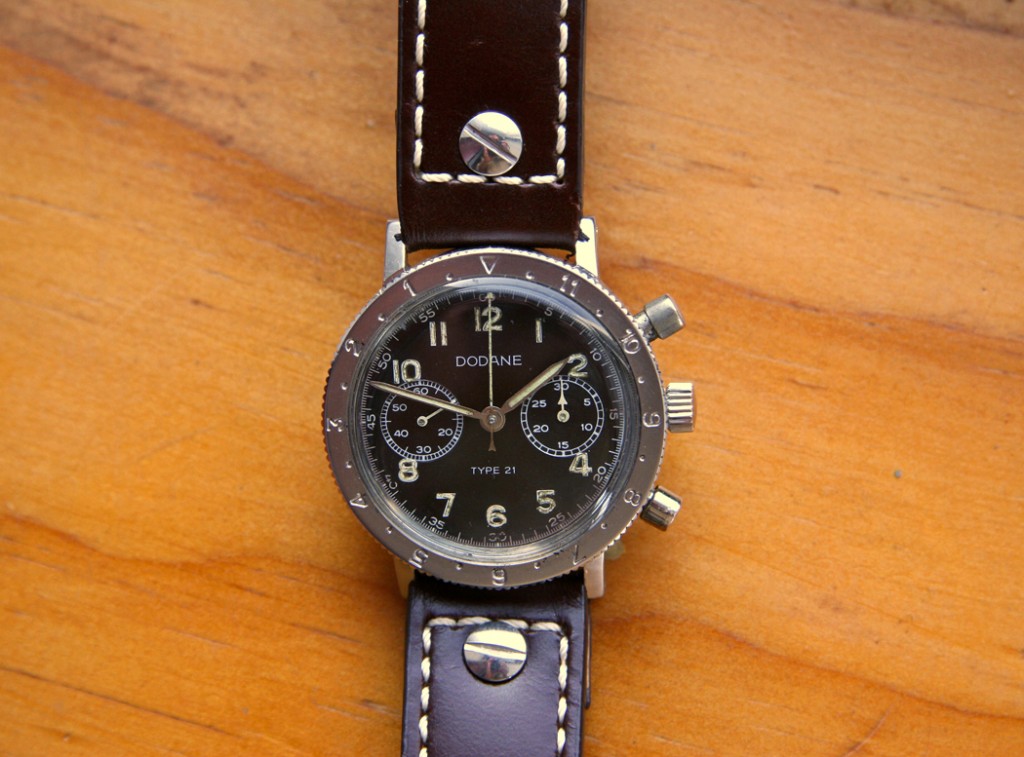Aviator’s chronographs are among the most attractive of vintage military watches, as they tend to come in larger cases and have distinctive dial configurations for easy reading during missions. And hey, who doesn’t like a chronograph, right? Among the most storied pilot’s chronos are the Type XX and Type XXI, originally designed by Breguet in the 1950s for the French naval and air forces. Today, issued versions of those original watches, which Breguet produced in very limited numbers despite over a decade of manufacture, are among the most highly prized MilWatches out there and can routinely fetch $20k or more.
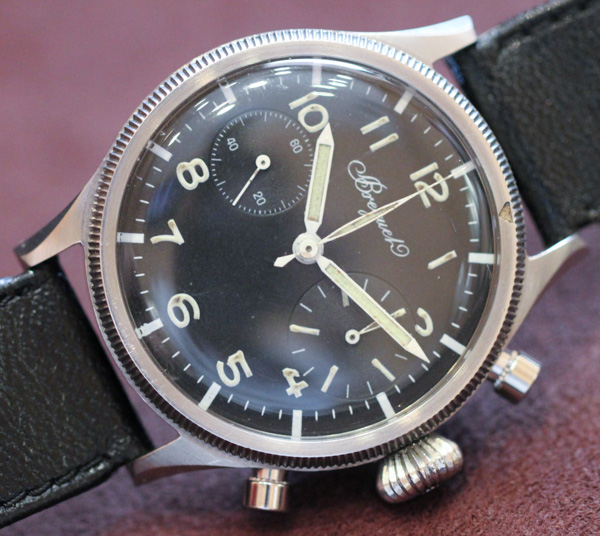
Early Breguet Type XX (Image from the excellent ablogtowatch.com)
But the “Type 20” and “Type 21” designations were more of a military specification than a proprietary one, so Breguet was not the only manufacturer to produce these watches for the French armed forces. Which is a good thing for the collector because the “off brands” that were supplied are just about as attractive and can be found in the $2500-3500 range give or take, a helluva lot easier on the wallet. Among the other suppliers (or at least producers) of “Type” aviator cronographs were Auricoste, Vixa and Dodane (Mathey-Tissot also produced what is essentially a Breguet clone but these are both super scarce and damn expensive in their own right). Click here for an excellent overview of French Military Type chronographs hosted over at FinerTimes.com.
Since I am the proud owner of a Dodane Type 21, I figure I’ll show it off and go into detail on this model in particular, although it is no better or worse a choice than any of the others in its price range. First off, one of the things that makes a Type 20 or 21 is a flyback feature added to the chronograph mechanism. This is a simple little complication pioneered by the German Luftwaffe watches in WWII manufactured by Tutima and Hanhart and refers to the instantaneous resetting of the chrono sweep seconds hand to zero and instant restart of same when the bottom pusher is depressed while the chrono is running. Otherwise, it functions like any other chronograph as far as the stop-start-reset buttons go, just that on a flyback you don’t have to stop the chrono before resetting (on a normal chrono you should never hit the reset pusher while it’s running lest you damage the mechanism). On the Dodane, this is achieved via the excellent Valjoux caliber 235.
The Dodane dial is essentially a clone of the Vixa, which was really just a rebadged Hanhart, the French supposedly receiving an allotment of their chronos post WWII as a form of reparations. We can assume that the luminous Arabic figures are Tritium compound, as well as the hands filling and coating. The best part about these Dodane dials, though, is that many of them have aged to a “tropical” brown. In a certain light, you can really see the chocolate tone which has come to dominate after years of sun exposure and that is so extremely attractive.
By the time Dodane started supplying watches to the French armed forces, the case itself had been upgraded to all-stainless steel design and so it is quite rugged. The water resistant screwback will often show “FG” dates, which refers to “Fin de Garantie” from the military watchmaker’s servicing department, in other words the date of next service. Servicing was supposed to be mandatory, which is why you can find Type 21s with multiple FG marks but mine was only serviced the once with the guarantee expiring in 1979. This also shows the durability and servicibility of these Type 21s, as they ceased being supplied to the French armed forces earlier in the 70s. But with a reported total of 5000 watches delivered, I suppose they were able to continue supplying them to pilots for several years after the last delivery.
The interesting Dodane bezel had been altered from earlier versions of Types to show decreasing figures countdown-style, which is also useful as an elapsed mission timer. The latter function works by setting the triangle to the hour hand when you leave base and it will show that time at the “12” position, i.e. rotate the arrow to 3 o’clock and the figure above “12” is 3. This way even though the chronograph only goes up to 30 minutes you can still calculate total elapsed time from your take off point. Occasionally you find a Dodane with the bezel numerals still filled with enamel paint or even with reversed black background and silver numerals but the great majority encountered are as you see mine, without any black highlights whatsoever and only the steel still showing overall. Maybe not great for pilot legibility but for me it’s one of its many charms.
As mentioned above, the Dodane Type 21 is a classic large avaitor’s size at 38mm in diameter. Having standard and not fixed springbars, it wears really nicely on brown leather or a NATO-style strap, although it has that oddball 19mm lug width that was so peculiarly common in the old days and means you will often have to pinch a standard 20mm strap a bit to make it fit (there are no 19mm NATOs as far as I know–leather you can find). Obviously, today you can still buy modern incarnations of the Breguet Type chronographs, as they are some of the revivified marque’s biggest sellers. But Dodane has also been reborn and they too offer a modern take of their classic military chronograph, with a 3-register “Type 21” and 2-register “Type 23”.
They are still dead sexy if not more so and also still feature an optional flyback complication, as well as the ability to design your own version with several permutations (different bezels, display backs, etc). They are also quite expensive at over $5k USD for bracelet options, which seems like a lot for an off brand now powered buy the omnipresent Dubois-Depraz 2030 module on top of an ETA base, not exactly haute horology. So for now, unless I see a good deal on the secondary market, I’ll be sticking with my original vintage Type 21. It’s a reasonably priced classic of military design and a very handsome form following function. But if Dodane make a new version with this sort of beautiful brown dial I may just change my mind.


